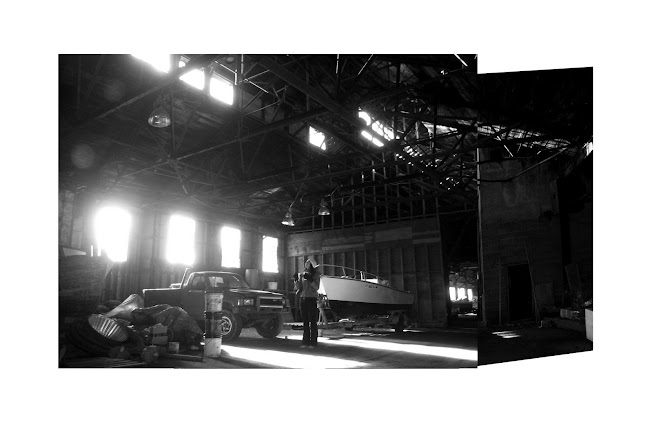"WINNING THE OIL END GAME", a recent Ted Talks release, is a presentation by Amory Lovins outlining the United States' opportunity to transform itself from an oil-importer with a bleak future to a super efficient producer of sustainable energy and products. Simon contends that through simple capital investment in energy saving technologies, the private sector and military can development and support sustainable products and industries, from wind, to bio-fuel, to hydrogen, to carbonfiber materials, all at short-term profit returns, with the potential to grow into a robust and vibrant new American and global economy. All possible without Federal legislation, and all possible immediately.
At the moment, all I can say is the timing of this presentation couldn't have come better for me, as I'm stuck in the middle of Kunstler's "The Long Emergency" and things don't look good for my 40th birthday.
As this regards to my thesis, it obviously throws fuel on the fire, so to speak, of this early choice of a biofuel/hydrogen fuel cell prototyping shop for the University of Connecticut's new Connecticut Global Fuel Cell Center. Without waxing on, clearly what's at stake culturally or socially is stability and peace in a livable planet, not for the idea of future generations, but for this generation, for right now.
The question I'm dealing with now is how does architecture, the forms, materials, design processes, address this urgent social issue in a meaningful, effective, and efficient way. Simon's presentation provided some overlap to my Research component, physicalization and mass customization, with his example of the carbonfiber McClaren t-boned at a Hollywood intersection (11:15) and then describing new advances in carbonfiber and nylon composites and the revelations in casting, assembly, and manufacturing of the hypereffecient concept cars waiting in the proverbial wings (did he say 155mph at 94mpg?). (Still needed: revisiting SHoP and Office dA processes and production, etc) With regard to site specificity, the attitude of renewing the life of the 150 year old manufacturing site may be supported by the infusion of carbon fiber materials. This suggests opportunity for studying overlapping site systems (for example, concurrent + competing programs of industry, tourism, investigation, voyeurism...) through digital and physical modeling of real plastic materials. (Can the properties of carbon fiber scale 1:1?)
The trick at the moment is enabling these socio-political, programmatic, and site "so-what's" to inform the architectural research, without the architectural research becoming about real estate development, socio-political engineering, etc.
university of maryland school of architecture master of architecture program
12.12.2007
Subscribe to:
Posts (Atom)
